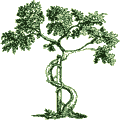
|
|||||||
Osteogenesis Imperfecta
What is it?
Osteogenesis imperfecta (or OI) is a group of hereditary disorders characterized by fragile bones, that result in multiple fractures at birth or during childhood. Incidence is one per 10,000 live births.
What causes it?
This is a group of genetic disorders that causes abnormal formation of Type I collagen, found in bones, teeth, sclera and ligaments. In the bones this causes severe osteoporosis. The severe forms of OI (Type II and III) are usually autosomal recessive, while the milder forms (Type I and IV) are autosomal dominant.
What are the symptoms?
OI is classified usually into four types (Sillence classification), depending on the genetic, clinical and radiographic characteristics. According to severity, the classification is as follows:
- Type II - the most severe, usually autosomal recessive, but may be a mutant form of autosomal dominant. Presents with multiple fractures in utero and at birth. Usually lethal in the first few weeks of life.
- Type III- usually autosomal recessive, and develop fractures at birth or during the neonatal period, which heals with multiple deformities of the limbs. Severe bowing of long bones, triangular facies, severe short stature, and scoliosis.
- Type IV- as in Type II, but less severe. Moderate short stature.
- Type I - the mildest form of OI. May develop fractures from moderate trauma after age 1, and may have mild or no deformity, blue sclera, and early hearing loss.
What does your doctor do about it?
In most cases, the diagnosis is not in doubt, given the genetic, clinical and X-ray manifestations. However, in some cases of Type I, where the diagnosis is not clear, a skin biopsy with tissue culture of the fibroblast may be necessary.
Treatment should be undertaken in a tertiary medical center, given the rarity and severity of the condition. There is no cure for this condition, so treatment is directed to preventing and treating fractures and deformities. Treatment consists of physical therapy, splints and braces, castings, and surgical correction when indicated. Non-orthopedic problems like early hearing loss and defective dentition require treatment by the appropriate specialists.
NOTICE: The information presented is for your information only, and not a substitute for the medical advice of a qualified physician. Neither the author nor the publisher will be responsible for any harm or injury resulting from interpretations of the materials in this article.
Questions
or comments? Post your thoughts in the Orthoseek
Message Forum!
Find a pediatric orthopedic surgeon
in an area near you.
Home | About Us | Orthopaedic Topics | Message Forum
![]()
Comments, questions, or suggestions are welcome. Please
contact us using this form.